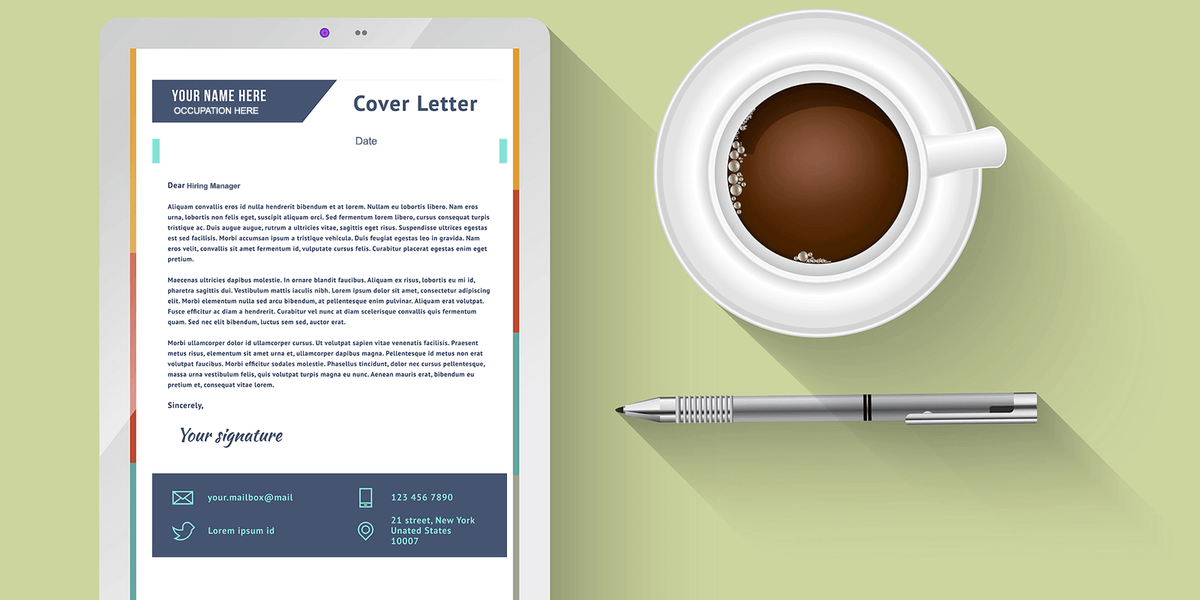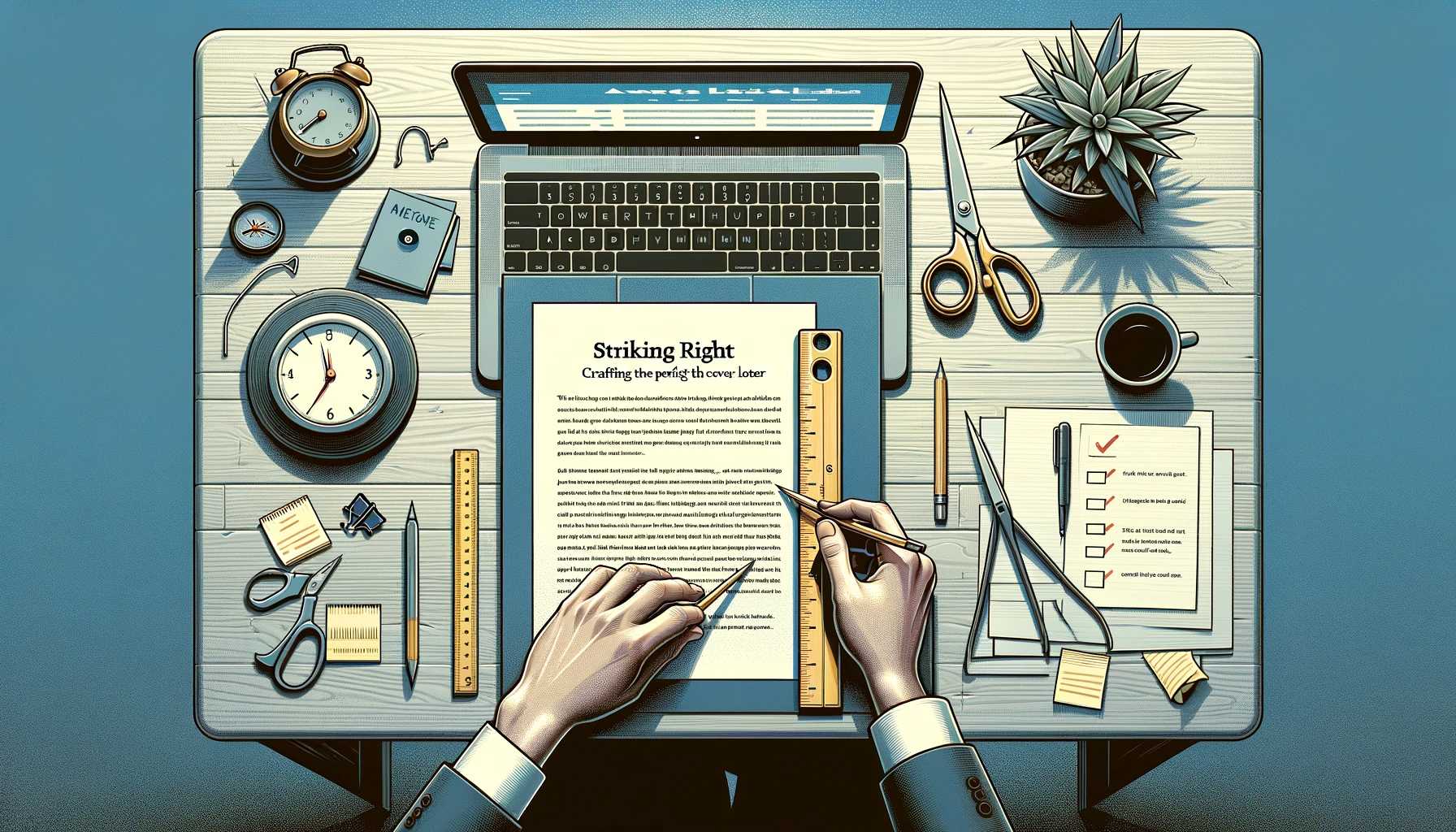Crafting the perfect cover letter length involves a delicate balance between providing enough information and maintaining the reader’s interest. It’s important to remember that hiring managers often have to sift through hundreds of applications, meaning your cover letter should be concise and compelling. A one-page document, roughly 250 to 400 words, is considered the standard length.
This gives you enough space to introduce yourself, explain your interest in the position, and highlight your most relevant skills or experiences. However, the most crucial aspect is ensuring the content within those words is meaningful and impactful. The introduction should grab the reader’s attention, the body should build on that interest by showcasing your fit for the role, and the conclusion should leave a lasting impression. The goal is to entice the reader to review your resume for more in-depth information. Every word counts when it comes to crafting the perfect cover letter length.

Finding the Right Length
Finding the right length is a crucial aspect that varies in different contexts, whether it be writing an essay, crafting a speech, or even selecting a dress. The right length is often a delicate balance, a sweet spot that needs to be discovered rather than strictly determined. In academic writing, for instance, it’s about conveying your thoughts and arguments effectively without being overly verbose or excessively terse. In speeches, the ideal length should captivate the audience without causing boredom. In fashion, the length of your attire should complement your body shape and the occasion.
However, identifying the right length is not always straightforward. It requires an understanding of the context, the audience, the purpose, and the constraints. For example, if you’re writing a blog post, you need to consider the attention span of the audience, the complexity of the topic, and the platform’s guidelines. Similarly, in a formal presentation, you must consider the allocated time, the depth of the subject matter, and the audience’s existing knowledge.
It’s also essential to remember that the right length may change over time or in different situations. A presentation that worked perfectly in a business meeting may need to be shortened for a web conference. A lengthy blog post that delves into a complex issue may need to be condensed into a shorter version for a quick read.
In essence, finding the right length is a dynamic process that demands flexibility and judgment. It’s like finding the perfect fit – it may take time and adjustments, but once you find it, it enhances the effectiveness and appeal of your work. So, whether you’re penning your thoughts, preparing a speech, or choosing your outfit, remember that the right length is often subjective. Your task is to find the balance that suits your purpose, respects your audience’s time, and achieves your desired outcome.
Factors Affecting Length
Length, in various contexts, can be influenced by several factors. In the physical world, temperature can significantly impact the length of an object. As materials heat, they often expand, increasing in length; conversely, they contract when cooled. This temperature dependence is frequently exploited in engineering and construction to accommodate changes in size due to fluctuating environmental conditions. Additionally, pressure can also affect length. Especially in compressible objects, an increase in pressure can cause a decrease in length as the object is condensed.
In the realm of mathematics and geometry, length can be affected by dimensional changes. For instance, changing the dimensions of a shape or object can directly influence its length, width, or height. Similarly, in the context of vectors in physics, the direction and magnitude can determine the length of the vector.
In the world of textiles and fashion, the length of a garment or material can be influenced by the amount of fabric used, the style of the garment, and the wearer’s height and preferences.
In the context of writing, the length of a text or document is influenced by the complexity of the topic, the intended audience, the level of detail required, and the writer’s style. Writers may need to adjust the length of their work to meet word limits, to keep readers engaged, or to adequately cover the subject matter.
Therefore, length is not a static or singular attribute, but rather a flexible characteristic that can be influenced and altered by a multitude of factors. These factors can range from physical conditions such as temperature and pressure, to mathematical adjustments in dimensions, to personal preferences in fashion and writing. Understanding these factors and how they affect length can enable better predictions, more precise calculations, and more effective designs in various fields.

Importance of Conciseness
Conciseness is a vital communication skill, one that cannot be underestimated in its significance. It is about presenting your thoughts and ideas in a clear, precise, and direct manner, devoid of unnecessary details. The importance of conciseness is underscored in various domains, such as academic writing, business communication, journalism, and even day-to-day conversations. In academic writing, conciseness allows students to convey their understanding of a subject matter in a manner that is easily understood by their readers. In business communication, being concise ensures that the intended message is delivered promptly and effectively, promoting productivity and reducing the likelihood of misunderstandings. For journalists, conciseness is key in conveying the crux of a story without losing the readers’ interest.
Conciseness also fosters efficiency in communication, saving both the speaker’s and listener’s time. It aids in avoiding redundancy and repetition, which can bore the audience and dilute the impact of the message. A concise message is more likely to be well-received and understood, leading to effective communication.
Moreover, in our digital age, where information overload is a constant issue, conciseness aids in making content more digestible for the audience. It allows for the clear and quick dissemination of information in a world where attention spans are limited. It also helps in structuring thoughts and ideas in a coherent manner, promoting clarity of thought.
Furthermore, conciseness can also enhance the credibility of the speaker or writer. A person who communicates concisely is often perceived as confident, capable, and knowledgeable, enhancing their professional image.
In conclusion, conciseness is not just about using fewer words but about choosing the right words and structures to deliver a message effectively. It is a skill that can greatly improve both personal and professional communication, making it an essential tool in today’s fast-paced world.
Cover Letter Objectives
Cover letter objectives revolve around the principle of succinctly conveying your interest, skills, and suitability for a particular job role to a potential employer. The primary goal of a cover letter is to grab the attention of a hiring manager and stand out from other candidates. Your cover letter should showcase your unique qualifications for the job and express why you are a perfect fit for the role. It should also provide a brief summary of your professional background, including your experiences, accomplishments, and skills that are relevant to the position you’re applying for.
Another crucial objective of the cover letter is to illustrate your understanding of the organization and the role itself. It’s an opportunity to show your genuine interest in the company and its mission. Further, it should also serve as a demonstration of your written communication skills, showing your ability to articulate your thoughts clearly and professionally.
Moreover, a cover letter is your chance to explain any gaps in your work history or any other peculiarities in your resume which may raise questions. It can also be used to express how your values align with that of the organization, thereby proving that you’re not only suitable skills-wise but are also a cultural fit for the company.
Lastly, the cover letter should ideally end with a call to action. It should encourage the hiring manager to read your resume and invite you for an interview. Remember, the cover letter is not just a repetition of your resume, but it should complement it by providing context and additional information. Thus, the objective of a cover letter is to intrigue the employer, making them want to know more about you, and eventually leading to an interview call.

Essential Components
Essential components refer to the indispensable elements that form the core of any system, structure, or process. These are the building blocks that carry out the primary functions and contribute to the overall performance and success of the system. For instance, in a car, the engine, tires, and steering wheel are some of the essential components. Without them, a car wouldn’t be able to operate as intended. In an ecosystem, the flora and fauna, sunlight, water, and soil constitute the essential components, working in unison to maintain the balance and sustenance of life.
In an organization, the employees, management, infrastructure, and business strategy are the essential components that drive its growth and development. The same logic applies to an educational institution where the teachers, students, curriculum, and infrastructure form the core components. In the realm of technology, hardware, software, network, and data are the essential components that enable a computer system to function efficiently. Regardless of the context, the absence or malfunctioning of any of these essential components can compromise the integrity and effectiveness of the entire system.
Hence, it is crucial to ensure that each component is in its optimal state and functions harmoniously with the others. This requires regular monitoring, maintenance, and upgrade when necessary. Understanding and managing these essential components is a challenging yet vital task, as it forms the backbone of any successful operation or process. In conclusion, essential components hold a pivotal role in any entity, be it a machine, a biological ecosystem, an organization, or a computer system. Their importance lies in their ability to determine the functionality, efficiency, and overall success of the system they form part of.
Avoiding Common Mistakes
Avoiding common mistakes is a critical part of personal growth and development. It’s important to understand that nobody is perfect and we all make mistakes. However, when we learn from our errors and make a conscious effort to avoid repeating them, we add to our wisdom and improve our decision-making abilities. This applies to all aspects of life, such as education, career, relationships, and even personal finances. For example, if you frequently forget important dates or appointments, you can prevent this common mistake by keeping a calendar or setting reminders on your phone.
If you tend to overspend, you can avoid this frequent error by setting a budget and tracking your expenses. Similarly, in relationships, if you often find yourself in disagreements due to miscommunication, you can evade this prevalent blunder by improving your communication skills. In work or school, if you frequently miss deadlines, you can circumvent this common fault by improving your time management skills. It’s crucial to remember that avoiding common mistakes doesn’t mean aiming for perfection. Instead, it’s about recognizing our weaknesses, learning from our past, and making an effort to improve.
This not only helps us avoid unnecessary problems, but also aids in building resilience and enhancing personal growth. Ultimately, the key to avoiding common mistakes is self-awareness. By understanding our tendencies and triggers, we can anticipate potential errors and take proactive steps to prevent them. This proactive approach to life can help us become more efficient, effective, and successful in all our undertakings.

Harnessing Cover Letter Impact
Cover letters are often an overlooked aspect of the job application process, with many individuals focusing primarily on their resumes. However, they hold considerable potential to strengthen an applicant’s candidacy. Harnessing the impact of a cover letter requires strategic thinking and careful crafting. The introductory paragraph should grab the employer’s attention and establish a connection between the applicant and the company or role.
It should be followed by a brief yet comprehensive summary of the applicant’s skills and experiences relevant to the job. Using quantifiable achievements to demonstrate competency can further enhance the cover letter’s effect. In addition, the ability to convey passion and genuine interest in the role or company can make a significant difference. The closing paragraph should leave a lasting impression, reaffirming the candidate’s suitability for the role and eagerness to contribute to the organization.
Moreover, a well-written cover letter can also serve as a testament to the applicant’s communication skills, which are highly valued in most industries. Thus, by effectively utilizing a cover letter, job seekers can differentiate themselves from the competition and increase their chances of landing an interview. Proofreading for grammar and punctuation errors is essential as well, as these mistakes can detract from the overall impact of the cover letter. Therefore, to truly harness the power of a cover letter, one must approach it with the same level of seriousness and effort as they would with their resume.

